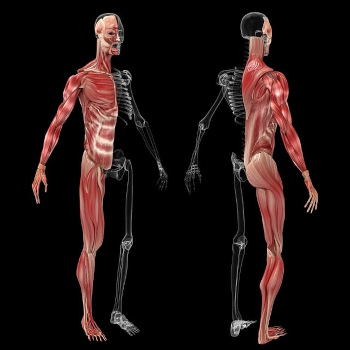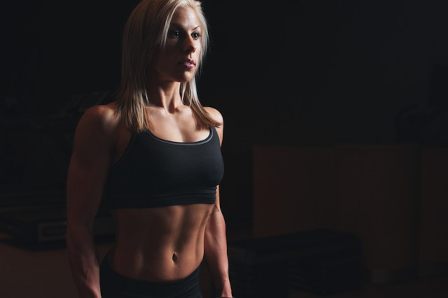As you clicked on this article you probably moved numerous muscles without even realizing it. The process happens so quickly that you can barely follow it. But how and why do the muscles even move and which muscles do you have zero control over? Keep reading to find the answer!
Different kinds of muscles

- Skeletal muscle
Skeletal muscles are attached to bones and are called striated. This means that they are made up of fibres that run in horizontal lines underneath the microscope. These muscles are voluntary muscles, which means that our body and brain can actively control their movements. Skeletal muscles contract powerfully but get tired rather fast. They can be found in our legs, arms, face etc. They give the body shape and hold the bones together. - Smooth or involuntary muscle
Involuntary muscles are, as the name already suggests, those that we can’t actively contract. They can be found in our stomachs and intestines and care for the smooth digestion of our food. The same muscles are responsible for pumping blood through our vessels which keeps up our blood pressure. Involuntary muscles take longer to contract than skeletal muscles but don’t tire as easily. - Cardiac muscle
The last kinds of muscle that our body contains are cardiac muscles which are found in our heart’s chambers. They act as involuntary muscles and contract powerfully to pump blood through our hearts.
How do they work?
When you decide to move a muscle, the part of your brain called the “cerebral motor cortex” and the “cerebellum” gets to work. The motor cortex then sends a signal through the spinal cord and peripheral nerves to the muscles. These signals cause the muscles to contract. There are two motor cortexes; the one on the left side of the brain controls the right side of our body and the other way around. The mentioned cerebellum coordinates all of these in the brain and works together with sensors in the muscles that send back messages about the movement. The body parts are able to move through the muscles contracting and then relaxing.

Joints
Joints sit at the part where two bones meet and make the body in its entirety flexible. They are three different kinds of Joints, separated by their level of movement. Immovable joints are found in the skull and are what hold your teeth in your jawbone. The joints in the skull move slightly during birth and become immovable as the skull is done growing. Partially moveable joints sit in between the vertebra in the spine. All of them together, even though they only move slightly, give the spine its flexibility. Freely movable joints can be found in the hip, elbows, knees, wrists, ankles and so on.
Muscles and everything around it can be very fascinating. The way our brain, when it works correctly, understands our plan to move something within the tiniest second or cares for our blood to steadily run through our heart and veins. I hope you learned something new about the parts of our body that make everything you do possible!
Sources:
https://kidshealth.org/en/teens/bones-muscles-joints.html#:~:text=Muscles%20move%20body%20parts%20by,a%20limb%20at%20a%20joint.
https://www.medicalnewstoday.com/articles/fluid-on-elbow-no-pain#causes
https://www.ncbi.nlm.nih.gov/books/NBK537236/#:~:text=Skeletal%20muscle%20is%20one%20of,muscle%20are%20known%20as%20fasciculi
https://www.biologyonline.com/dictionary/involuntary-muscle#:~:text=Involuntary%20muscles%20are%20the%20muscles,slow%20contractions%20and%20involuntary%20actions

